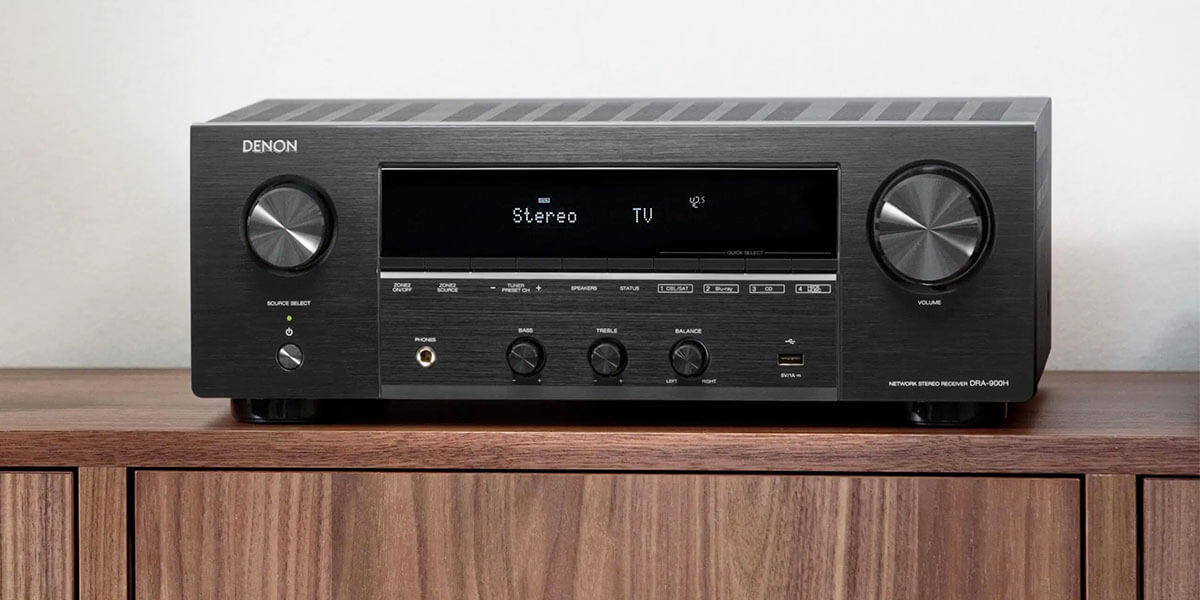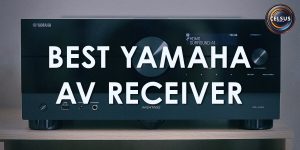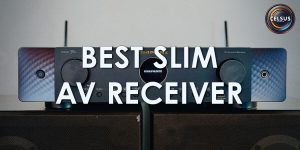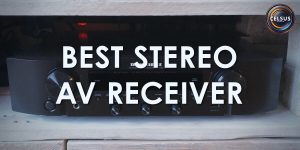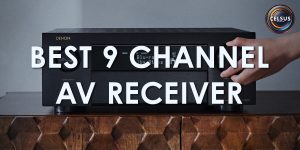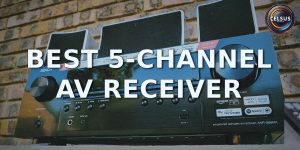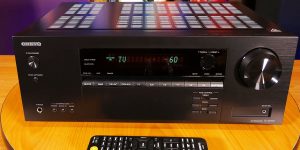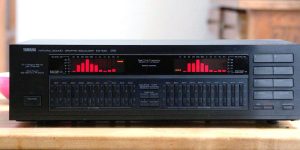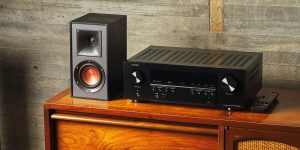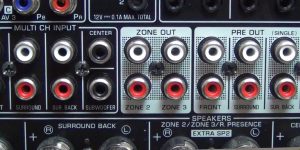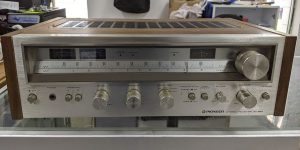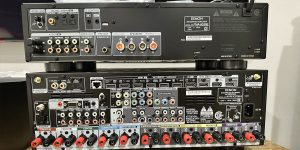Regardless of how fast the technologies develop, good old-fashioned turntables seem to become better and better with every year that passes. It’s so surprising that the number of analog enthusiasts keeps growing yearly in the digital era. On the other hand, it’s so easy to fall in love with rich and warm vinyl tones. With all this in mind, it’s not surprising that I, along with others, found myself searching for the best receivers for turntables. Luckily for me, and I guess for you, too. I can test multiple receiver models to see which of those is truly worth all the fuss.
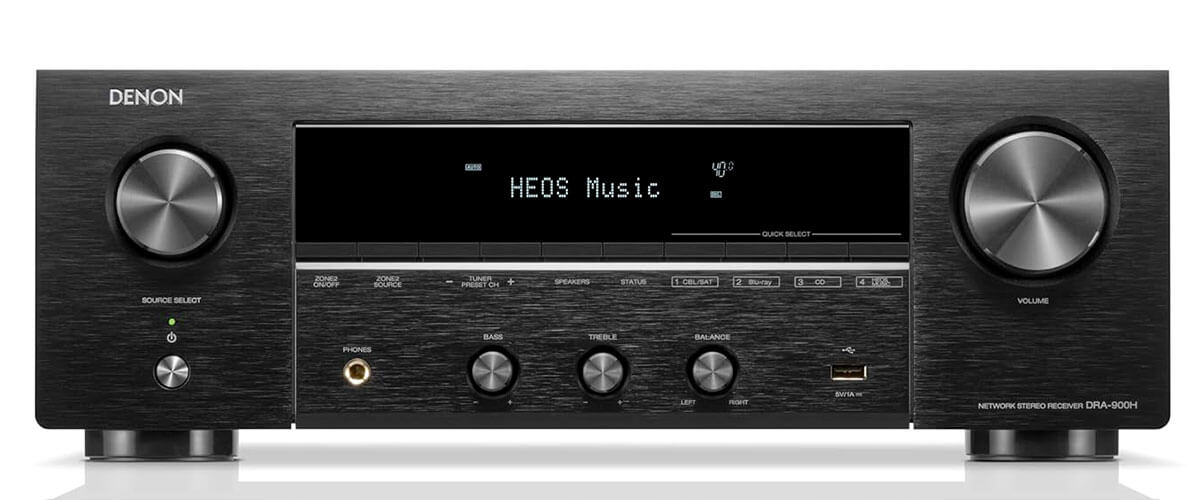
Receivers for turntables comparison table
| Name | Channels | Power output | HDMI in/out | Bluetooth/Wi-Fi | Review |
|---|---|---|---|---|---|
| Denon DRA-900H best overall | 2.1 | 100W/8 Ohm, 120W/6 Ohm | 6/1 | yes/yes | Review |
| Yamaha R-N303 also great | 2.0 | 140W/8 Ohm, 115W/4 Ohm | 0/0 | yes/yes | Review |
| Sony STRDH190 budget | 2.0 | 100W/8 Ohm | 0/0 | yes/no | Review |
| Yamaha R-N2000A premium | 2.0 | 120W/8 Ohm, 190W/4 Ohm | 0/0 | yes/yes | Review |
What are the receivers for record players?
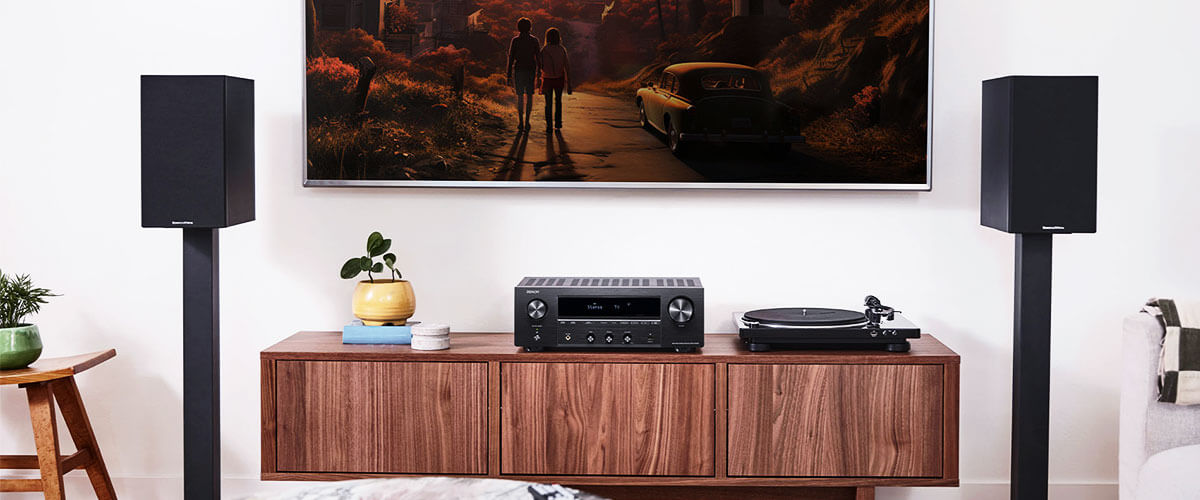
Those unaware never understand why 2-channel stereo receivers are still very popular. But people like me and you, those who know, this is far from a secret. If you are reading this article, I bet you already have a turntable pricing of $500. For those unaware, this is the divide. The turntables priced below this point feel good with powered speakers.
As you have guessed, everything above this point won’t satisfy you with the powered speakers because they would be the factor that limits the sound quality. We choose receivers with an integrated phono preamp because this step is essential for unlocking the true potential of premium turntables in the pursuit of unparalleled sonic fidelity. And finally, the time has come to uncover the best receiver for turntables.
Best receivers for turntables reviews
Denon DRA-900H – best overall

If something in this world is stable — it’s me always starting my reviews with the most incredible products. The Denon DRA-900H is the best receiver for turntables, judging by the multiple factors and their combination. Too loud a statement? Let me justify it:
Before we move further, I won’t forgive myself for not mentioning the design. And I am not talking about aesthetics here. Aesthetically, the DRA-900H doesn’t offer much, but it’s all about control knobs, buttons, and this vast displacement in the middle. Usually, I control the receivers from the remote or use the app, but this time, I couldn’t resist the temptation to use those — so well they are made. Yet, there is also a grain of salt for the radio lovers. The controls don’t allow running through the channels. It even gets words since the radio controls are hidden behind the witty menu.
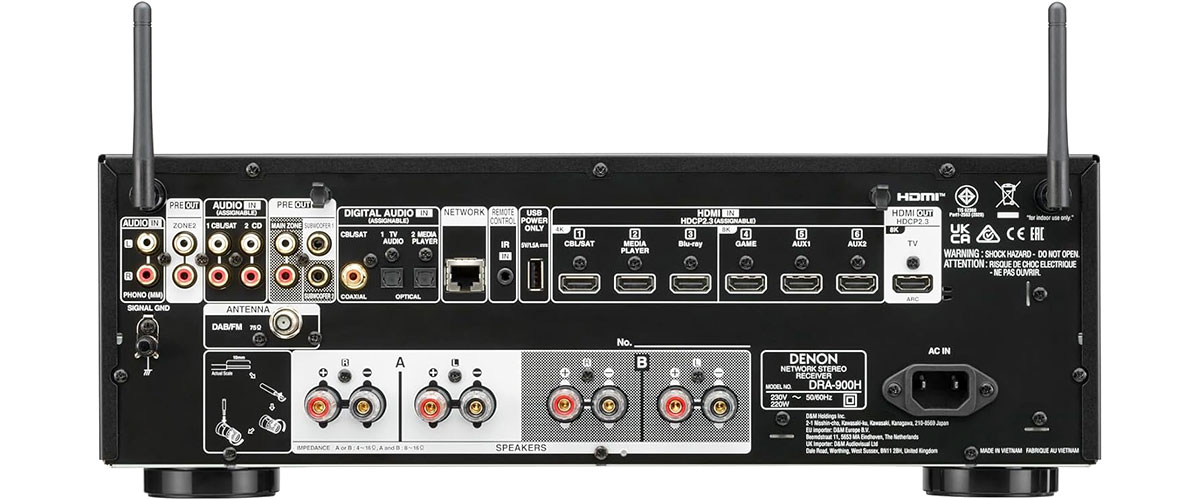
Denon DRA-900H comes with 100 watts under the hood (8 ohms at 20 Hz – 20 kHz with 0.08% THD), offering 8K, Blu-ray support, HEOS built-in, and, of course, support for vinyl turntables. The receiver has 6 HDMI (HDCP 2.3 and 8K content support) inputs, a single output, and 2 analog and digital inputs, including an optical, coaxial, and AM/FM tuner.
One of the standout features of the DRA-900H is its discrete power amplifier, ensuring a clean and powerful signal path for your vinyl playback. Pure Direct mode further enhances the analog listening experience, bypassing unnecessary circuitry for a more authentic sound. I love Denon’s awesome attention to detail — the gold-plated RCA terminals are only a tiny example of that.
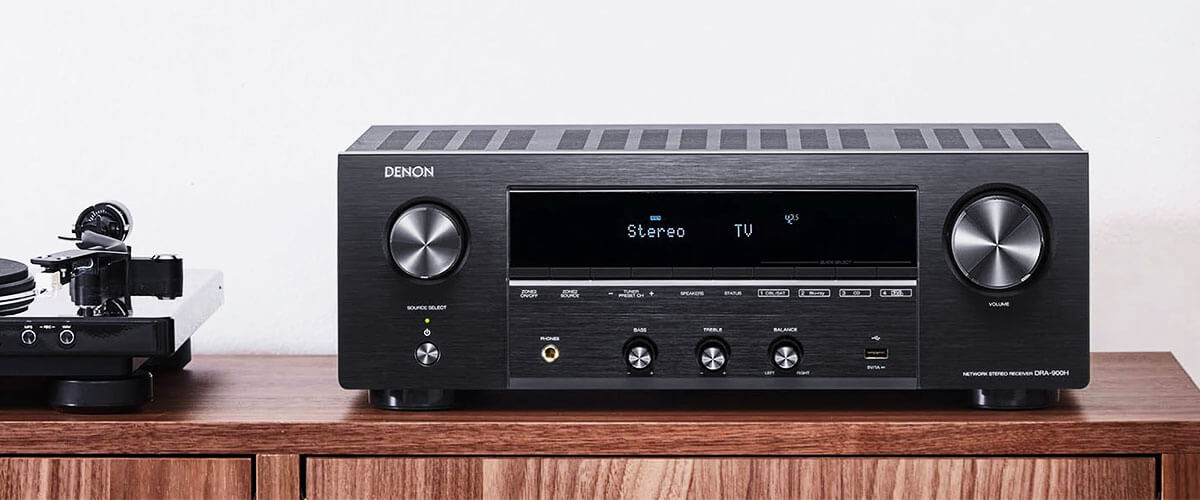
To evaluate the vinyl capabilities of the DRA-900H, I conducted an immersive testing experience. The DRA-900H delivered a nuanced and detailed performance, reproducing the subtle nuances of the vinyl medium with precision. From the crackle of Miles Davis’ jazz songs to the smooth pastries of Led Zeppelin, the receiver handled it all with finesse.
Given the decent power, rich set of features, and famous Denon bright and warm sound. The DRA-900H definitely has everything to be today’s best stereo receiver for turntables. Considering Denon’s focus on quality, this unit will serve for many years to come.
Key specs
- Channels: 2.1.
- Power output: 100W/8 Ohm, 120W/6 Ohm.
- HDMI inputs/outputs: 6/1.
- Video functions: 8K/60Hz, 4K/120Hz pass-through, 1080P/4K to 8K HDMI upscaling.
- Bluetooth/Wi-Fi: yes/yes.
- Streaming services: AirPlay2, TuneIn, Spotify, Pandora, SiriusXM, Amazon Music HD, TIDAL, Deezer, iHeart Radio, Napster, SoundCloud, Mood Mix.
- Supports: HDMI ARC, HDMI eARC, HDMI CEC, HDCP2.3, HDR10, HDR10+, HLG, Dynamic HDR, Dolby Vision.
- Surround sound: DTS HD Master, DTS:X, DTS Neural:X, DTS Virtual:X, Dolby TrueHD, Dolby Atmos, Dolby Atmos Height Virtualization, Dolby Atmos Music, Dolby Surround, IMAX Enhanced, Auro-3D.
Pros
- Excellent sound quality at any volume.
- Gold-plated RCA terminals.
- Works in synergy with modern devices.
Cons
- Lacks the radio tuning knobs.
- Radio controls are hidden behind a witty menu.
Yamaha R-N303 – also great
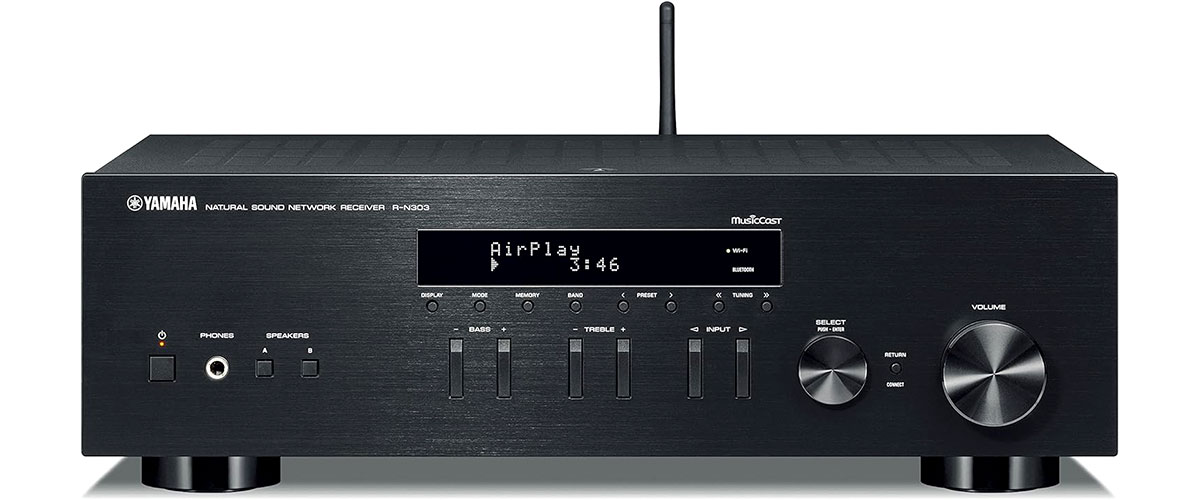
That one was challenging because the Yamaha R-N303 stands out for many features and offers a lot of use cases, obviously including vinyl. It lacks the majority of features that the Denon DRA-900H has, but being on top among other receivers for record players doesn’t necessarily mean boasting a higher number of features. So, I decided between this unit and the Denon DRA-900H. Yet, few details still allowed Denon to score higher.
The R-N303 offers a dedicated phono input and does a great job of delivering a bright and balanced sound. It sounds very cool. However, here comes the first detail that didn’t let it score higher — typical Yamaha sound. This brand loves its cold, neutral, and clear sound, perfect for movies, gaming, and even music genres. Yet, we all love turntables for their warmth, and the R-N303 just doesn’t deliver that.
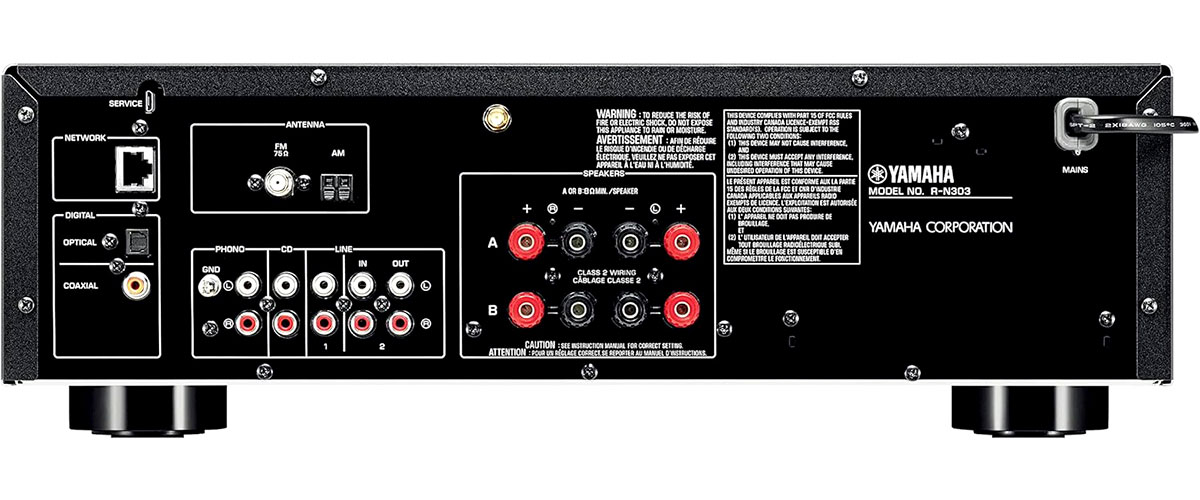
While the previous one was subjective, technical specifications offer a more objective picture. Yamaha R-N303 boasts a minimum RMS output power of 100 W + 100 W (8 ohms, 40 Hz-20 kHz, 0.2% THD). There is always enough power for you, regardless of what genre you enjoy. However, get ready to fine-tune it yourself because it has no advanced calibration options.
This unit also pales a bit regarding connectivity options because it lacks HDMI and doesn’t offer any video content. The dedicated phono input, along with digital and analog options, make the R-N303 a comprehensive audio hub for diverse user preferences.
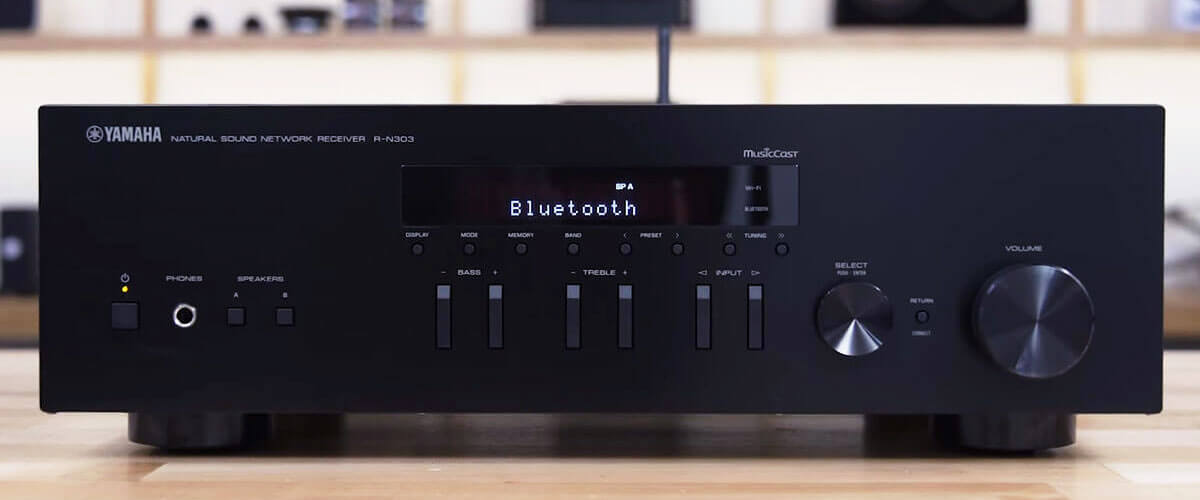
The R-N303 has Wi-Fi capability, and the Wireless Direct feature proved convenient. Those offer hassle-free connectivity and the freedom to stream music from various devices. The AirPlay, MusicCast, and Bluetooth functionalities further expanded the avenues for enjoying music, making the R-N303 a versatile choice. However, the lack of a dedicated subwoofer is a disappointment.
So, why isn’t the Yamaha R-N303 not the closest receiver with phono input? Denon DRA-900H stands out for its advanced networking features, HEOS technology, and comprehensive HDMI connectivity. It is a powerhouse for those prioritizing seamless multiroom audio experiences, advanced streaming options, and cutting-edge HDMI capabilities. Meanwhile, R-N303 is an excellent receiver mainly focused on vinyl sound.
Key specs
- Channels: 2.0.
- Power output: 140W/8 Ohm, 115W/4 Ohm.
- HDMI inputs/outputs: has not.
- Video functions: has not.
- Bluetooth/Wi-Fi: yes/yes.
- Streaming services: Spotify, TIDAL, Deezer, Napster.
- Surround sound: has not.
Pros
- Bright and Balanced Sound.
- Offers rich wireless connectivity options.
- Works well with Yamaha’s MusicCast platform.
Cons
- Doesn’t offer a dedicated subwoofer out.
- Lacks some warmth for vinyl listening.
Sony STRDH190 – budget
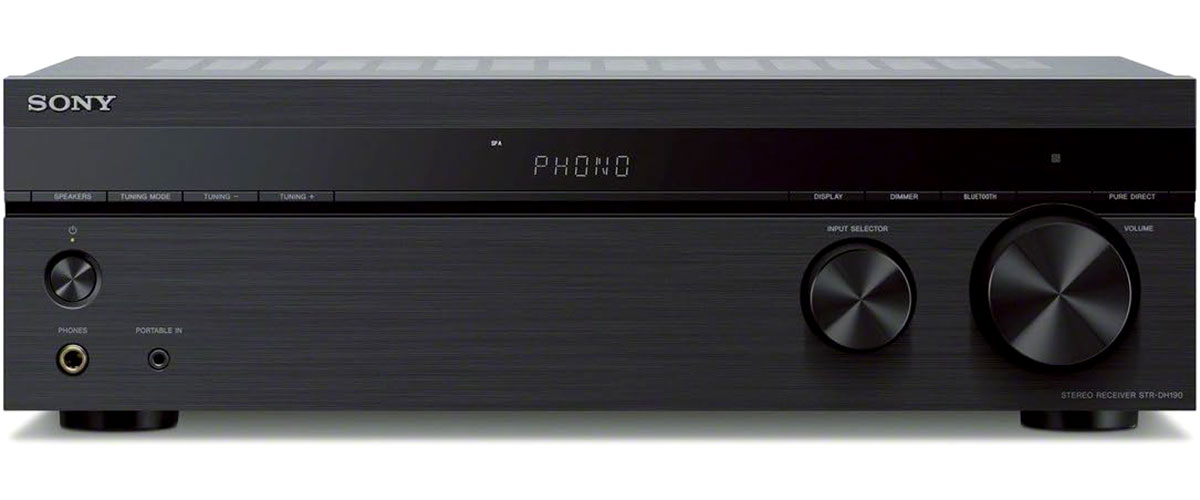
Have you already faced this stereotype that vinyl is expensive? Indeed, it takes more to enjoy it than to upload some mp3, but I am talking about the real deal — quality sound. If you are one of those who believes in that, let me introduce you to the Sony STRDH190 — the stereotype breaker.
With dimensions measuring 17″ x 5-1/4″ x 11-1/4″ and weighing 14 lb 13 oz, the STRDH190 is pretty compact. Yet Sony didn’t cheap out and invested in its chassis and schematics — those aren’t the latest technologies, but reliable. Okay, it lacks a lot of features, but the most important one is still here — the phono input. Interestingly, this receiver is thoughtfully sound-matched to the PS-HX500 and PS-LX310BT turntables. So, if you have those and seek quality sound and about it — then you already know what to opt for.
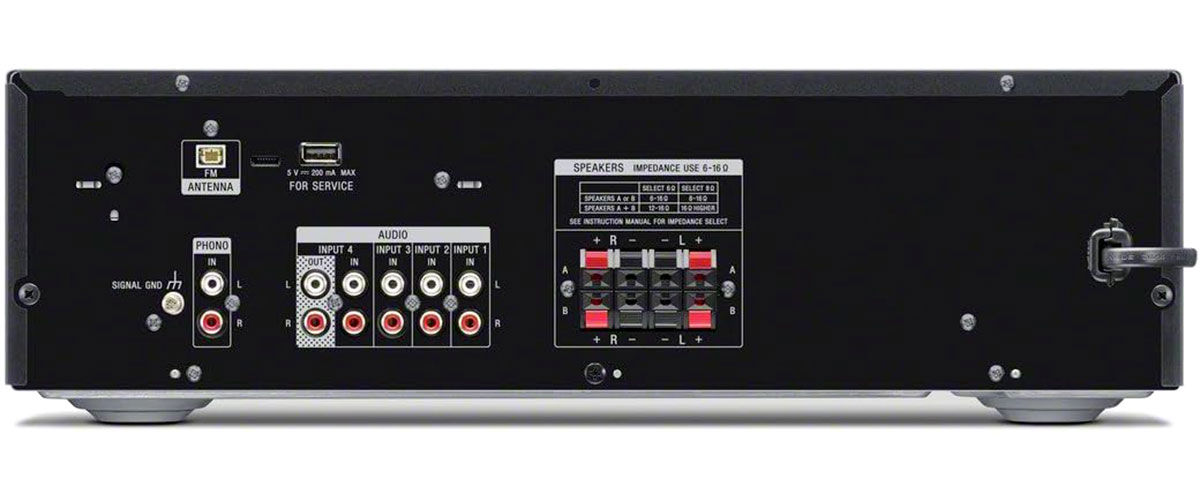
With a power output of 100 W + 100 W (8 ohms, 1 kHz, THD 1%), the amplifier in the STRDH190 delivers a commendable performance. My testing revealed a rich and well-balanced sound that did justice to the nuances of vinyl recordings. Let’s be honest: the other receivers in this review do sound better, especially in small nuances. But those are way pricier. In turn, here you get a quality Yamaha-like sound at a fraction of the price.
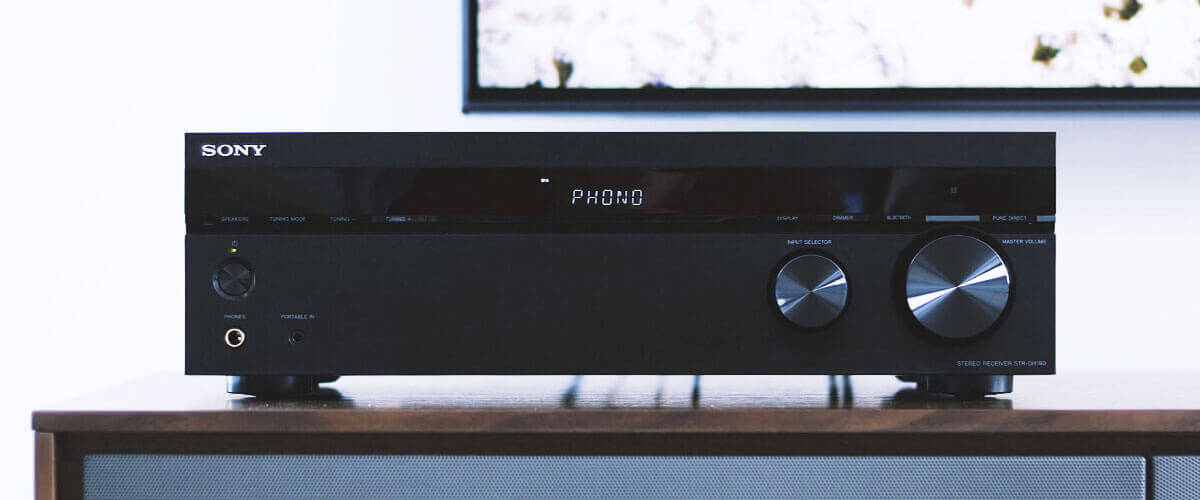
In conclusion, the Sony STRDH190 Stereo Receiver is a compelling choice for budget-conscious people, especially those with a penchant for vinyl. It can easily be your first unit or an upgrade over your older one. This budget receiver for turntable is a reliable unit that is worth every cent of investment.
Key specs
- Channels: 2.0.
- Power output: 100W/8 Ohm.
- HDMI inputs/outputs: has not.
- Video functions: has not.
- Bluetooth/Wi-Fi: yes/no.
- Streaming services: has not.
- Surround sound: has not.
Pros
- Decent sound quality.
- Offers Bluetooth connectivity.
- Easy to use.
- Works with diverse speakers.
Cons
- It’s a budget unit, and it’s easier to say what is there than what is not. You have got the idea.
Yamaha R-N2000A – premium
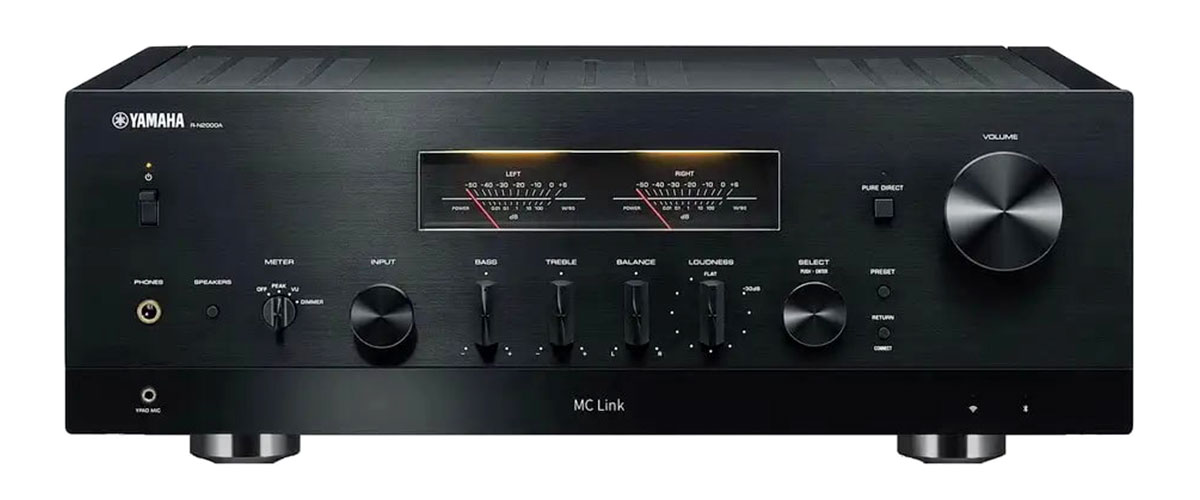
Now, finally, the time has come to make the quantity leap there. Going from the budget up to the premium stereo receiver with turntable input. The Yamaha R-N2000A Network Receiver is a powerhouse of audio excellence!
Obviously, having a dedicated Phono input, but with the rated power [20 Hz-20 kHz 0.07 % THD] 90 W+90 W (8 ohms) maximum going up to 120 W, and 145 W + 145 W (4 ohms) and the R-N2000A ensures that the delicate nuances of analog sound are reproduced faithfully, delivering a rich and vibrant listening experience.
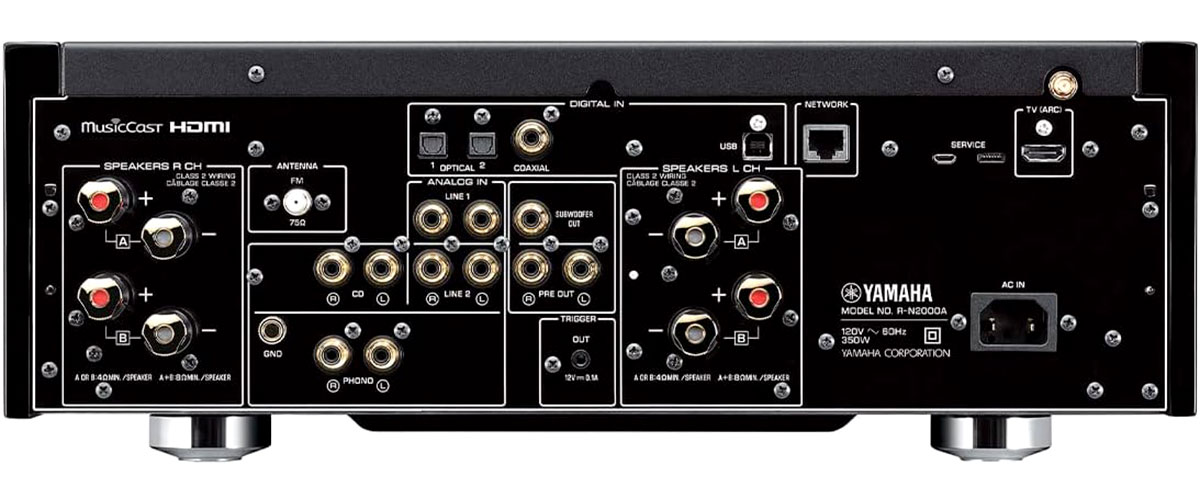
Yamaha hugely invested in technologies. Now, the ESS SABRE ES9026PRO Ultra DAC takes center stage, providing high-performance conversion. It does a magnificent job delivering the records the way they were meant to be. As you would expect from the premium product, it achieved breathtakingly pure and natural sound across lossless formats like FLAC and ALAC.
To maximize rigidity for expressive and rhythmic bass, the R-N2000A incorporates a mechanical ground concept. This is how Yamaha eliminated unwanted vibrations and resonances that can affect the quality of the analog sound.
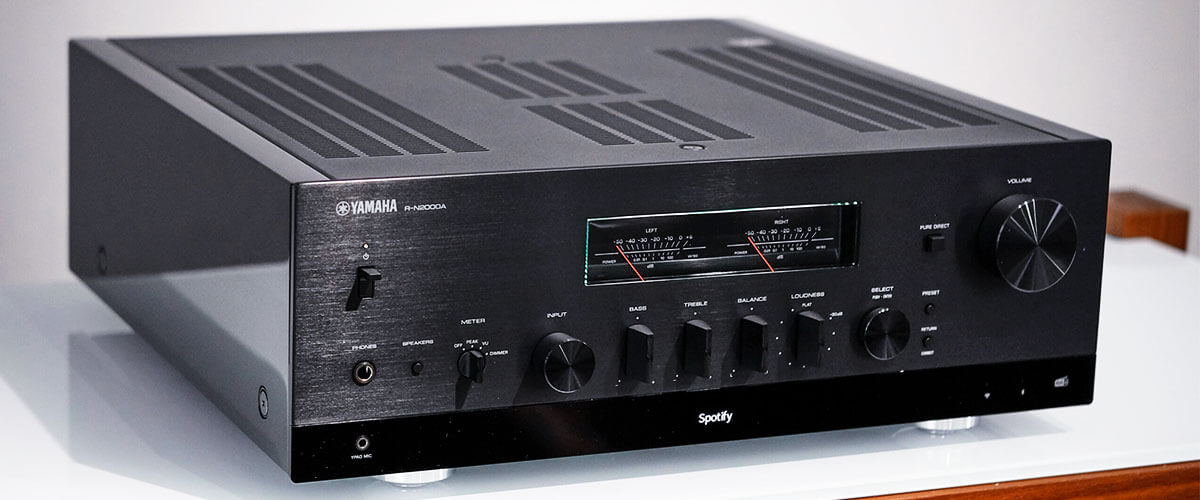
In our quest to put the R-N2000A’s vinyl capabilities to the test, I created a diverse selection of vinyl records, ranging from classic rock to jazz and everything in between. I lack words to express how the receiver built a vast landscape. It felt expansive, dynamic, and true to the essence of vinyl. In addition to vinyl playback, the R-N2000A’s versatility was evident as we seamlessly switched to digital sources, leveraging the USB DAC function that supports DSD 11.2 MHz native and 384 kHz playbacks.
This is a very expensive receiver for a record player, but it is worth it. Yamaha designed it very well, to the extent that every element comes together to create an auditory experience. This product honors the legacy of vinyl while embracing modern technology.
Key specs
- Channels: 2.0.
- Power output: 120W/8 Ohm, 190W/4 Ohm.
- HDMI inputs/outputs: has not.
- Video functions: has not.
- Bluetooth/Wi-Fi: yes/yes.
- Streaming services: has not.
- Surround sound: has not.
Pros
- Functional YPAO room correction.
- Awesome analog amplifier performance.
- Lovely retro design and build quality.
Cons
- Tends to build a lot of heat when driving low-impedance speakers to maximum.

